Abstract
Three strains of Pseudomonas aeruginosa were demonstrated to transfer double-drug resistance by conjugation to a P. aeruginosa recipient at frequencies of 10−4 to 10−2 per recipient cell. Two of the three strains also transferred to Escherichia coli at frequencies which were 103- to 105-fold lower, but the third strain could not be demonstrated to do so. The latter strain, however, conferred maleness on the Pseudomonas recipient. The transfer of streptomycin resistance was associated with the acquisition of streptomycin phosphorylase by both P. aeruginosa and E. coli recipients. Maximal broth mating frequencies were obtained with nonagitated cultures less than 1 mm in depth. A pyocine selection system based on donor sensitivity and recipient resistance is described and appears to have future value as a generalized selective device for use after matings.
Full text
PDF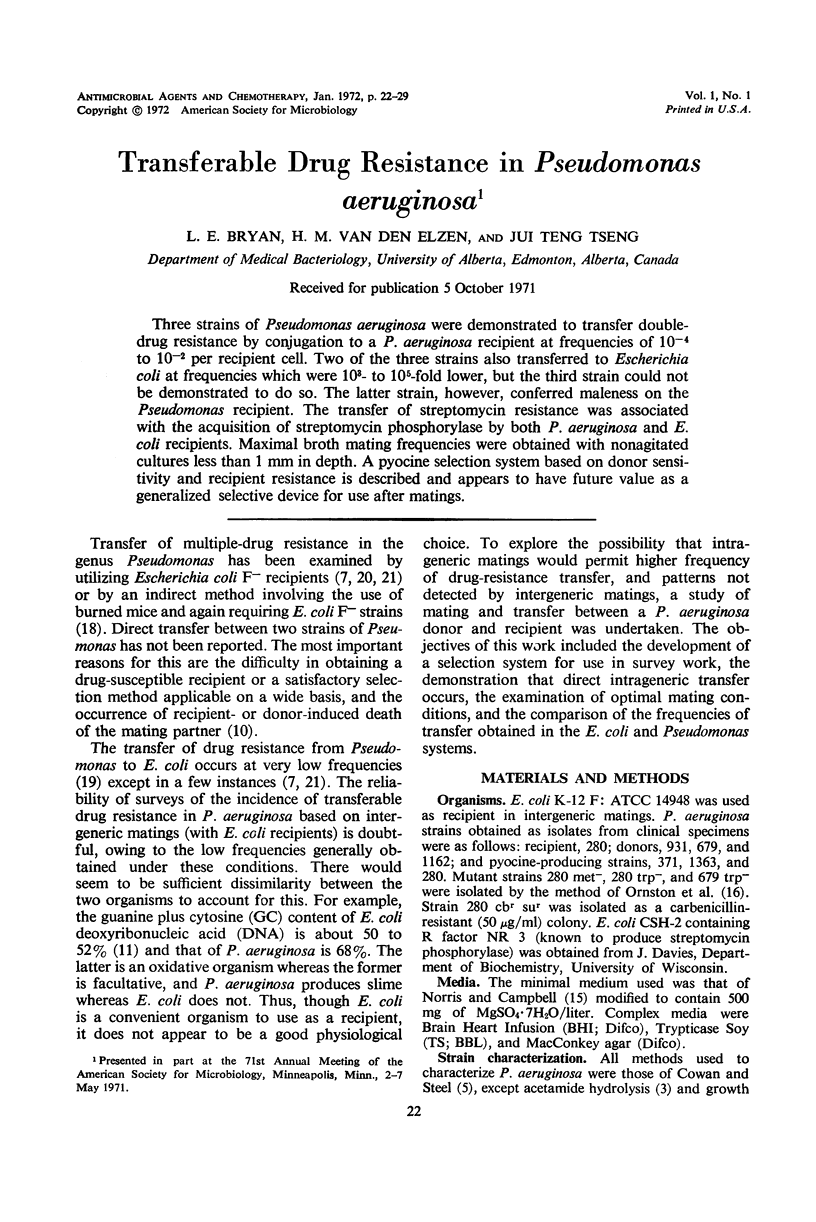
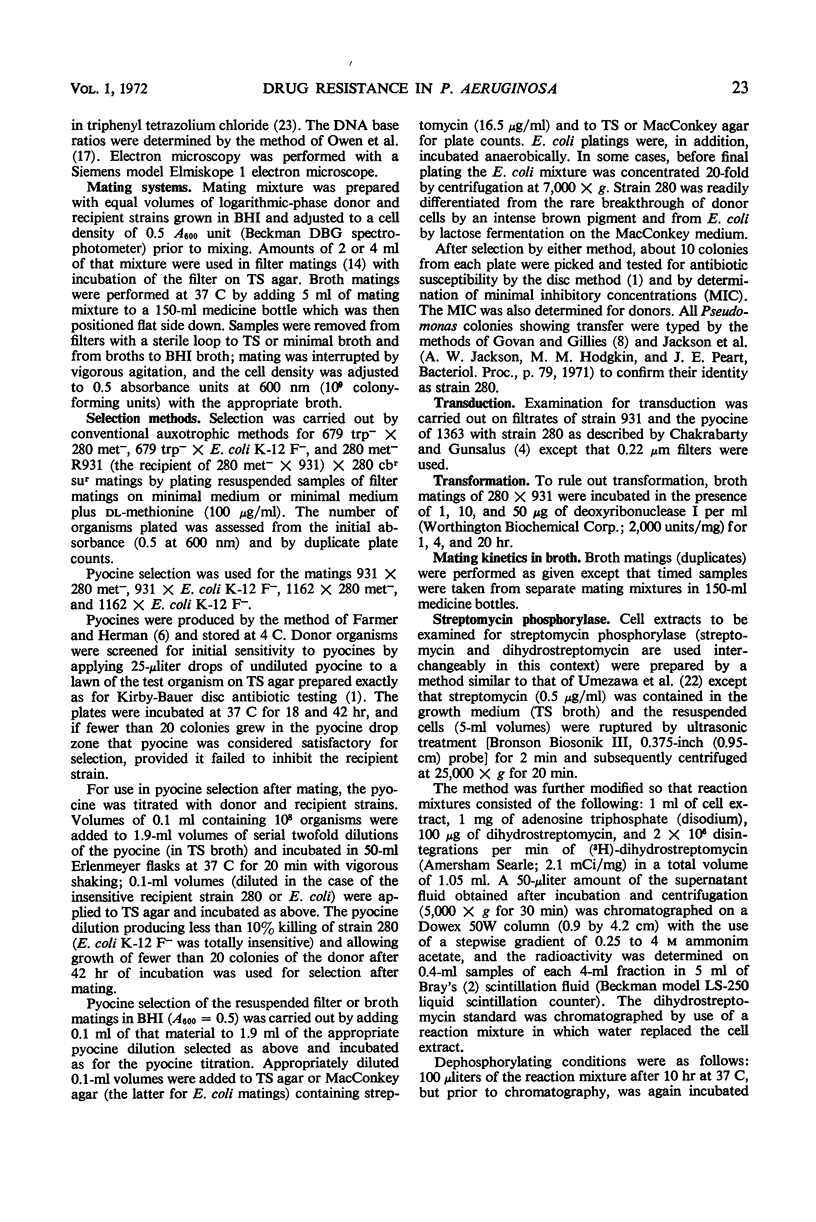
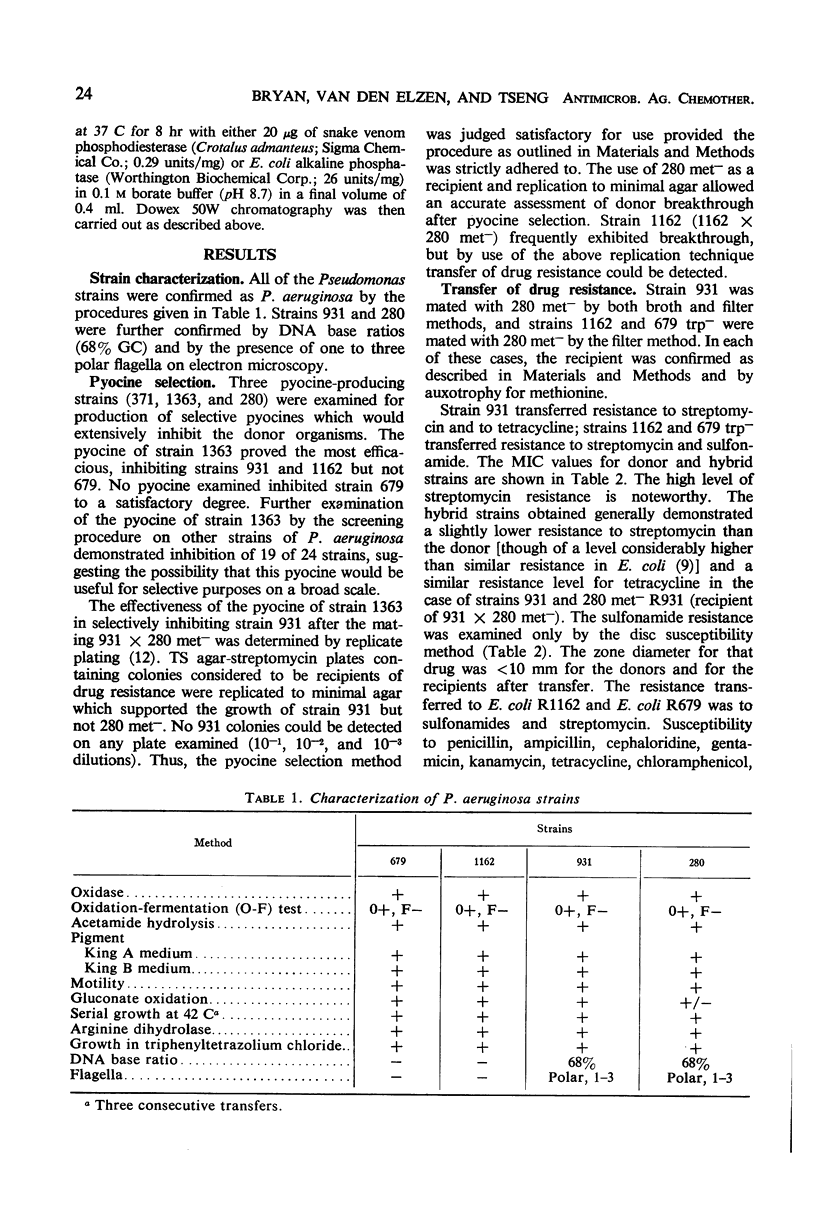

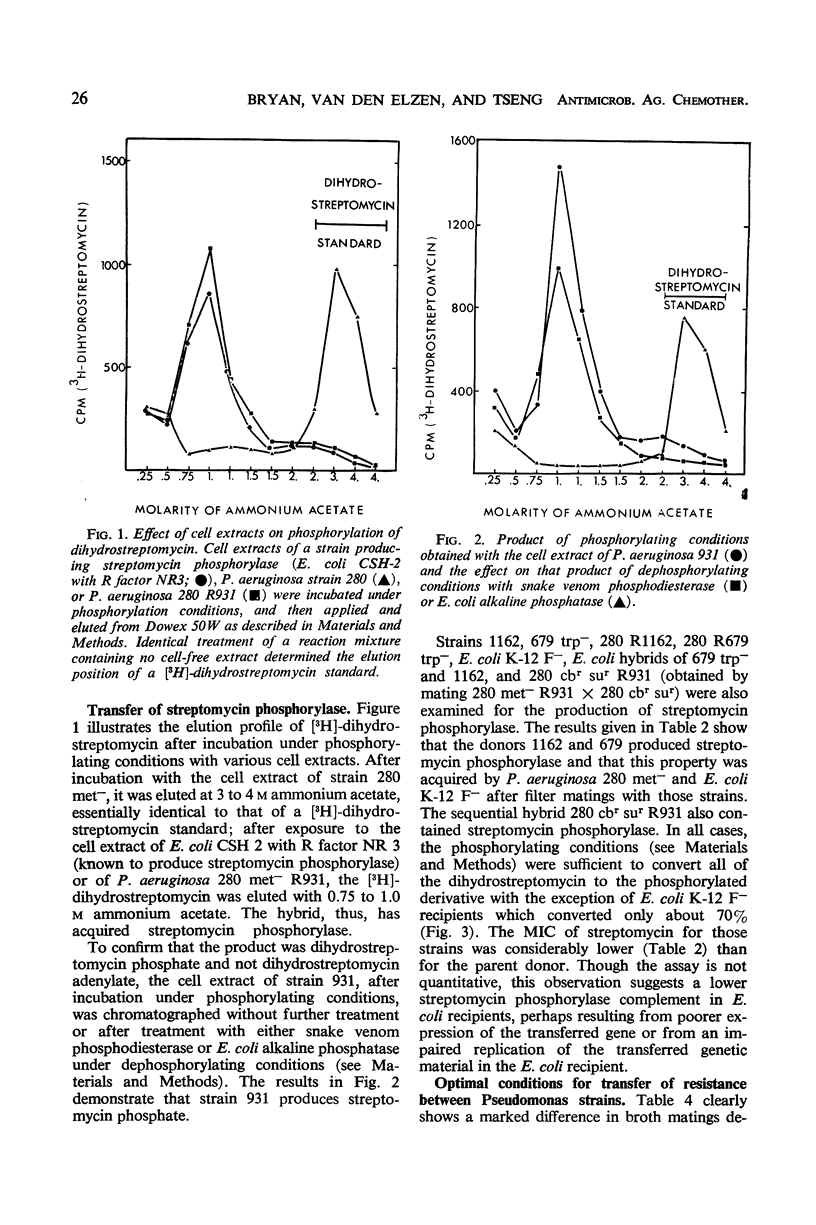
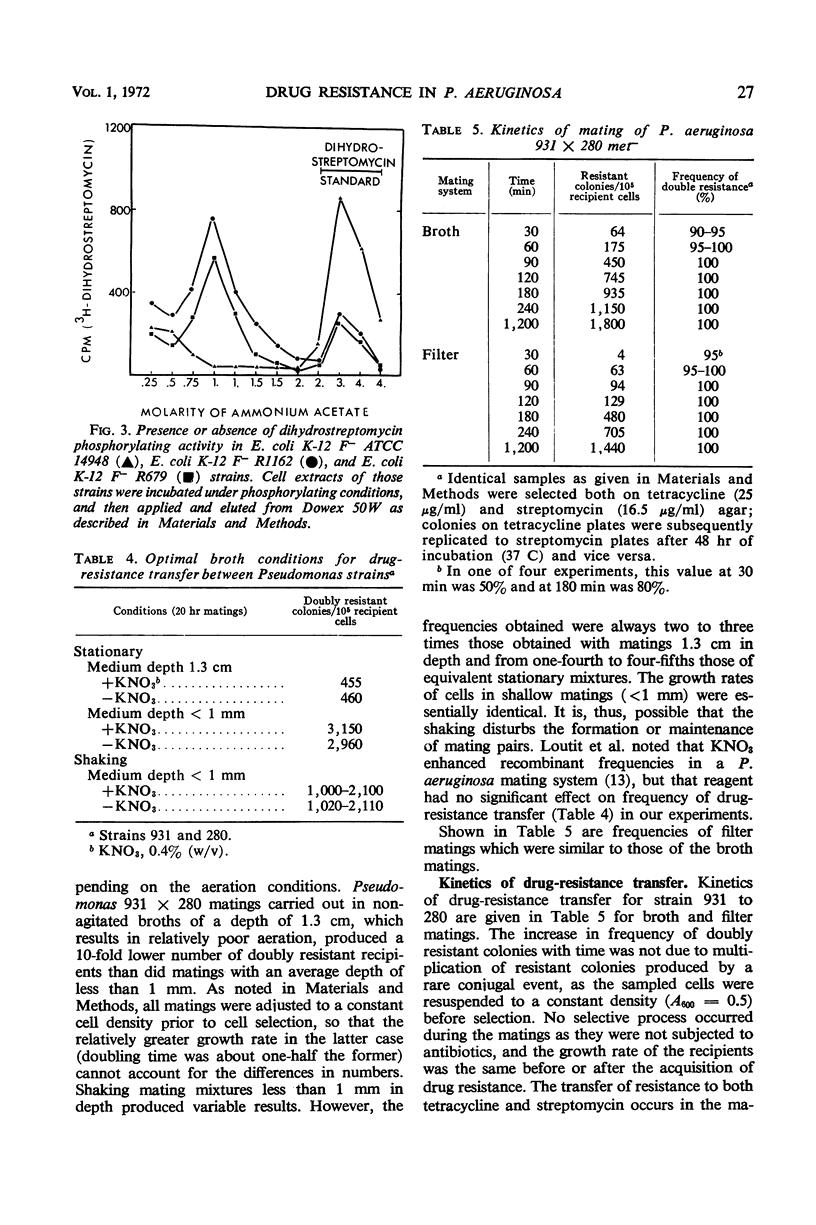
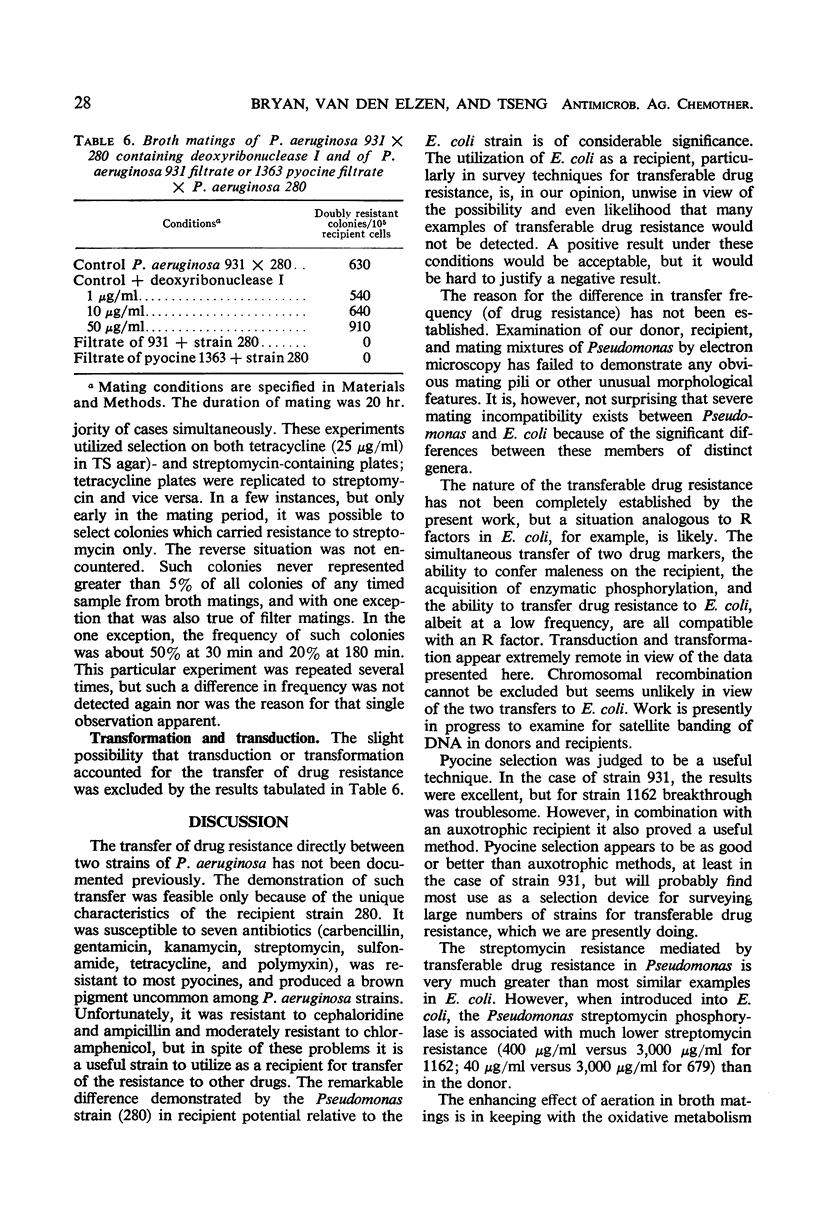
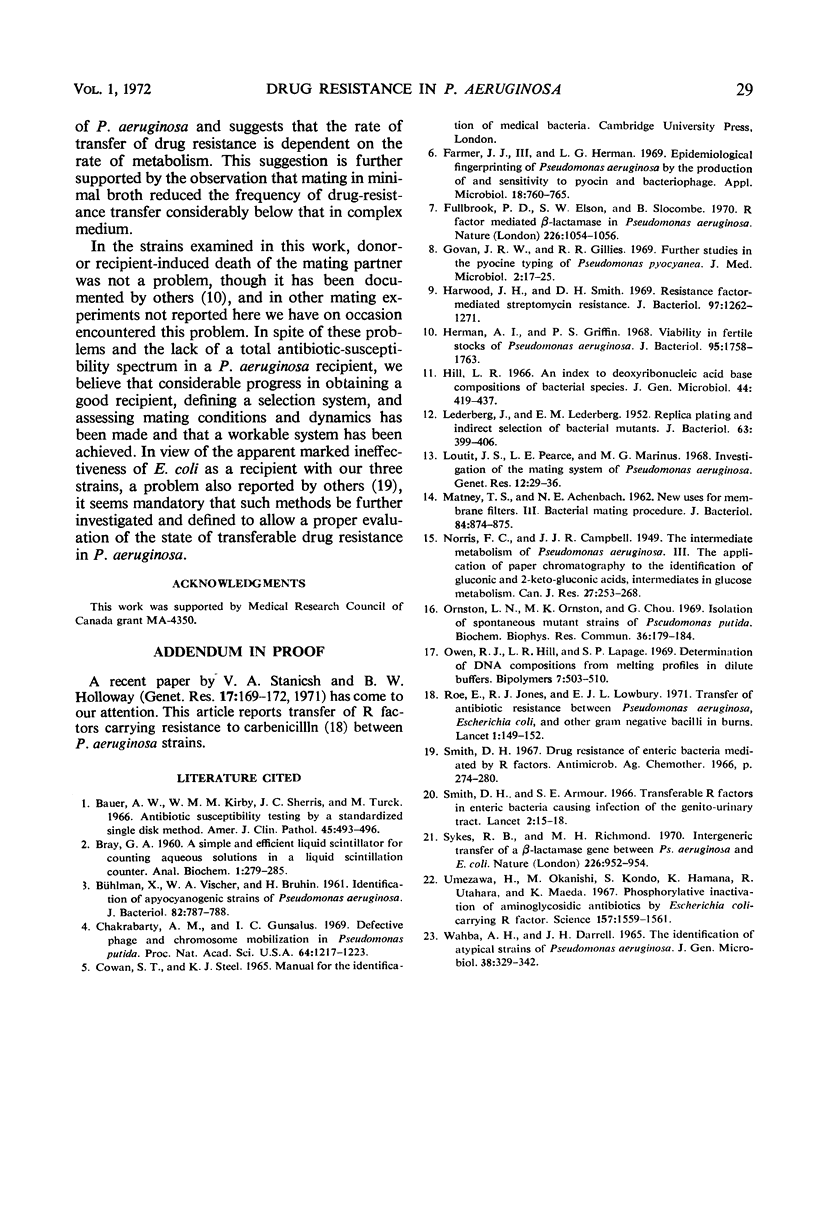
Selected References
These references are in PubMed. This may not be the complete list of references from this article.
- BUHLMANN X., VISCHER W. A., BRUHIN H. Identification of apyocyanogenic strains of Pseudomonas aeruginosa. J Bacteriol. 1961 Nov;82:787–788. doi: 10.1128/jb.82.5.787-788.1961. [DOI] [PMC free article] [PubMed] [Google Scholar]
- Bauer A. W., Kirby W. M., Sherris J. C., Turck M. Antibiotic susceptibility testing by a standardized single disk method. Am J Clin Pathol. 1966 Apr;45(4):493–496. [PubMed] [Google Scholar]
- Chakrabarty A. M., Gunsalus I. C. Defective phage and chromosome mobilization in Pseudomonas putida. Proc Natl Acad Sci U S A. 1969 Dec;64(4):1217–1223. doi: 10.1073/pnas.64.4.1217. [DOI] [PMC free article] [PubMed] [Google Scholar]
- Farmer J. J., 3rd, Herman L. G. Epidemiological fingerprinting of Pseudomonas aeruginosa by the production of and sensitivity of pyocin and bacteriophage. Appl Microbiol. 1969 Nov;18(5):760–765. doi: 10.1128/am.18.5.760-765.1969. [DOI] [PMC free article] [PubMed] [Google Scholar]
- Fullbrook P. D., Elson S. W., Slocombe B. R-factor mediated beta-lactamase in Pseudomonas aeruginosa. Nature. 1970 Jun 13;226(5250):1054–1056. doi: 10.1038/2261054a0. [DOI] [PubMed] [Google Scholar]
- Govan J. R., Gillies R. R. Further studies in the pyocine typing of Pseudomonas pyocyanea. J Med Microbiol. 1969 Feb;2(1):17–25. doi: 10.1099/00222615-2-1-17. [DOI] [PubMed] [Google Scholar]
- Harwood J. H., Smith D. H. Resistance factor-mediated streptomycin resistance. J Bacteriol. 1969 Mar;97(3):1262–1271. doi: 10.1128/jb.97.3.1262-1271.1969. [DOI] [PMC free article] [PubMed] [Google Scholar]
- Herman A. I., Griffin P. S. Viability in fertile stocks of Pseudomonas aeruginosa. J Bacteriol. 1968 May;95(5):1758–1763. doi: 10.1128/jb.95.5.1758-1763.1968. [DOI] [PMC free article] [PubMed] [Google Scholar]
- Hill L. R. An index to deoxyribonucleic acid base compositions of bacterial species. J Gen Microbiol. 1966 Sep;44(3):419–437. doi: 10.1099/00221287-44-3-419. [DOI] [PubMed] [Google Scholar]
- LEDERBERG J., LEDERBERG E. M. Replica plating and indirect selection of bacterial mutants. J Bacteriol. 1952 Mar;63(3):399–406. doi: 10.1128/jb.63.3.399-406.1952. [DOI] [PMC free article] [PubMed] [Google Scholar]
- Loutit J. S., Pearce L. E., Marinus M. G. Investigation of the mating system of Pseudomonas aeruginosa strain 1. I. Kinetic studies. Genet Res. 1968 Aug;12(1):29–36. doi: 10.1017/s0016672300011587. [DOI] [PubMed] [Google Scholar]
- MATNEY T. S., ACHENBACH N. E. New uses for membrane filters III. Bacterial mating procedure. J Bacteriol. 1962 Oct;84:874–875. doi: 10.1128/jb.84.4.874-875.1962. [DOI] [PMC free article] [PubMed] [Google Scholar]
- Ornston L. N., Ornston M. K., Chou G. Isolation of spontaneous mutant strains of Pseudomonas putida. Biochem Biophys Res Commun. 1969 Jul 7;36(1):179–184. doi: 10.1016/0006-291x(69)90666-4. [DOI] [PubMed] [Google Scholar]
- Owen R. J., Hill L. R., Lapage S. P. Determination of DNA base compositions from melting profiles in dilute buffers. Biopolymers. 1969;7(4):503–516. doi: 10.1002/bip.1969.360070408. [DOI] [PubMed] [Google Scholar]
- Roe E., Jones R. J., Lowbury E. J. Transfer of anibioic resistanceetween Pseudomonas aeruginosa, Escherichia coli, and other gram-negative bacilli in rns. Lancet. 1971 Jan 23;1(7691):149–152. doi: 10.1016/s0140-6736(71)91930-1. [DOI] [PubMed] [Google Scholar]
- Smith D. H., Armour S. E. Transferable R factors in enteric bacteria causing infection of the genitourinary tract. Lancet. 1966 Jul 2;2(7453):15–18. doi: 10.1016/s0140-6736(66)91745-4. [DOI] [PubMed] [Google Scholar]
- Stanisich V. A., Holloway B. W. Chromosome transfer in Pseudomonas aeruginosa mediated by R factors. Genet Res. 1971 Apr;17(2):169–172. doi: 10.1017/s0016672300012179. [DOI] [PubMed] [Google Scholar]
- Sykes R. B., Richmond M. H. Intergeneric transfer of a beta-lactamase gene between Ps. aeruginosa and E. coli. Nature. 1970 Jun 6;226(5249):952–954. doi: 10.1038/226952a0. [DOI] [PubMed] [Google Scholar]
- Umezawa H., Okanishi M., Kondo S., Hamana K., Utahara R., Maeda K., Mitsuhashi S. Phosphorylative inactivation of aminoglycosidic antibiotics by Escherichia coli carrying R factor. Science. 1967 Sep 29;157(3796):1559–1561. [PubMed] [Google Scholar]
- WAHBA A. H., DARRELL J. H. THE IDENTIFICATION OF ATYPICAL STRAINS OF PSEUDOMONAS AERUGINOSA. J Gen Microbiol. 1965 Mar;38:329–342. doi: 10.1099/00221287-38-3-329. [DOI] [PubMed] [Google Scholar]


